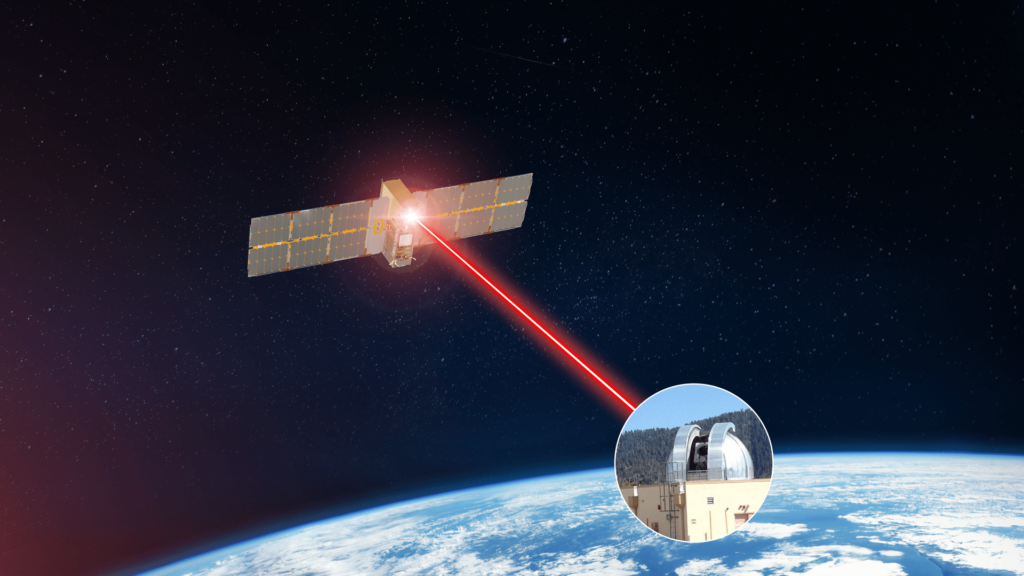On November 14, the Hale Telescope at the Palomar Observatory recorded a near-infrared laser beam with coded test data coming from a distance of 16 million kilometres. This experiment was the furthest demonstration of laser communication technology in history.

Since the beginning of the space age, radio communications have traditionally been used to provide communications with satellites and interplanetary probes. However, this situation may change in the near future. Engineers have been looking out for laser (optical) communication technology for quite a long time, which can replace radio in the future. The main reason is its effectiveness. Due to the use of infrared radiation with a shorter wavelength, such a system will be able to transmit one or two orders of magnitude more data than a radio transmitter.
In recent years, optical communication has been used more and more actively in space. For example, a demonstration repeater is already operating on the ISS, providing the station with broadband Internet. We can also recall the Starlink satellites, which use laser communication to exchange data.
Now, NASA has taken the next step and tested the technology for the first time in interplanetary space. For this purpose, the recently launched probe Psyche was involved, on board of which an experimental optical transmitter DSOC was located. On November 14, when the spacecraft was at a distance of 16 million km from Earth, it was activated for the first time.
After activation, DSOC detected a laser beam transmitted from the Table Mountain Observatory. Using it as a beacon, Psyche aimed its laser at Palomar, located 130 km south of Palomar, and the automatic systems on the transceiver and ground stations performed fine-tuning of the aiming.
The test was a success. The test data was simultaneously transmitted from Psyche to Earth and from Earth to Psyche. In the future, engineers plan to continue testing. In total, the experiment is designed for two years, during which Psyche will reach Mars, after which it will go deeper into the asteroid belt.
According to https://www.jpl.nasa.gov
Follow us on Twitter to get the most interesting space news in time
https://twitter.com/ust_magazine
